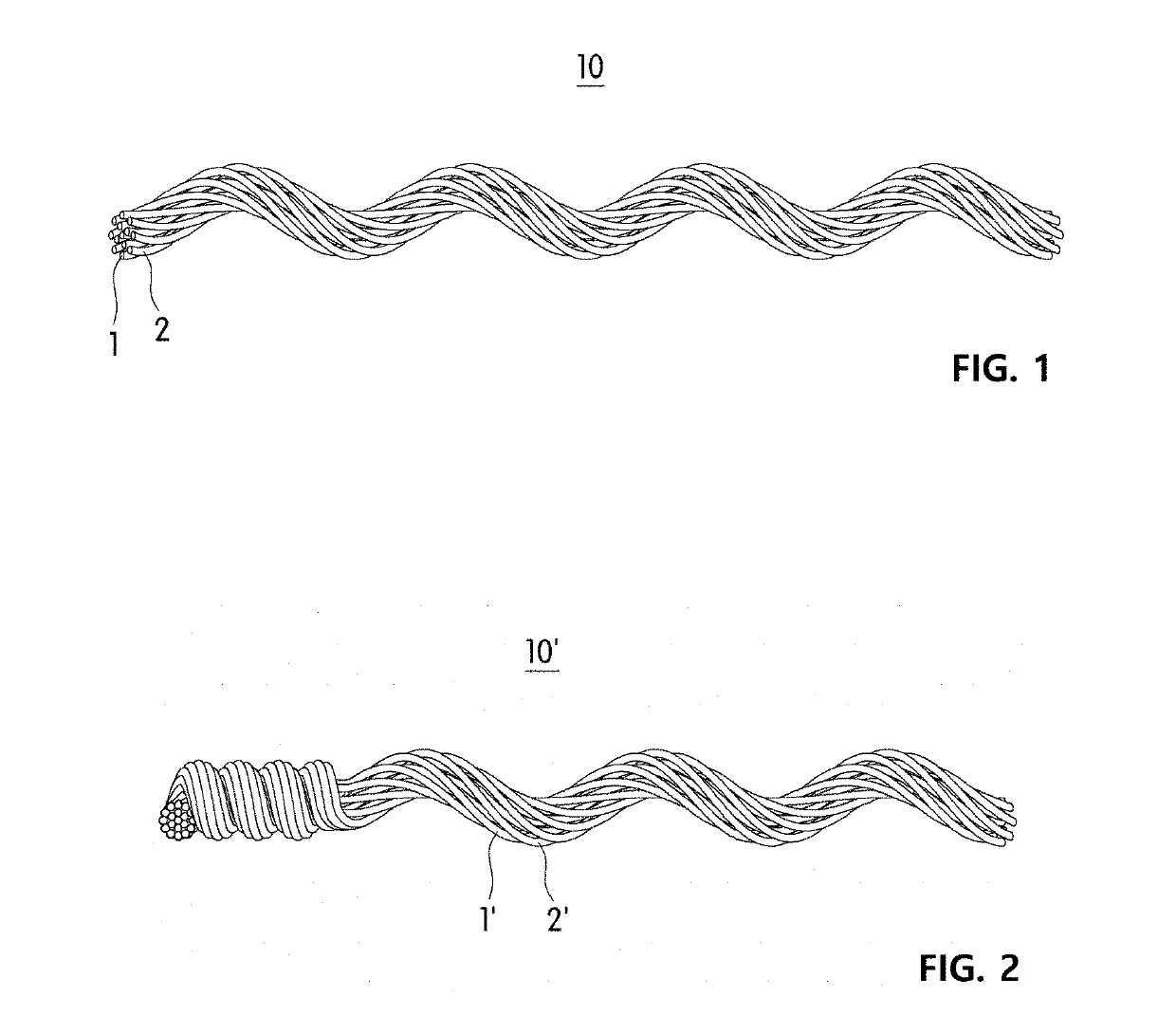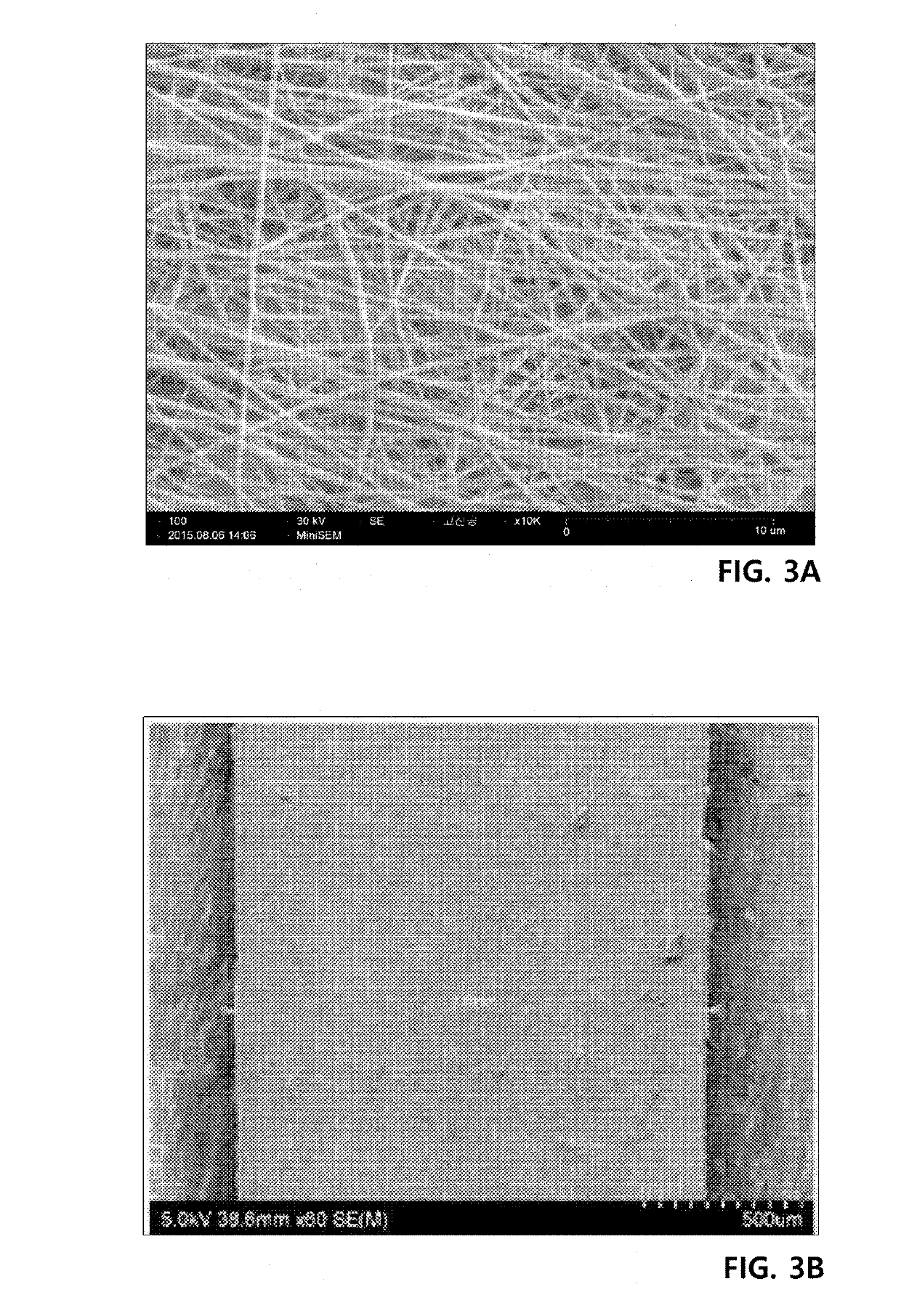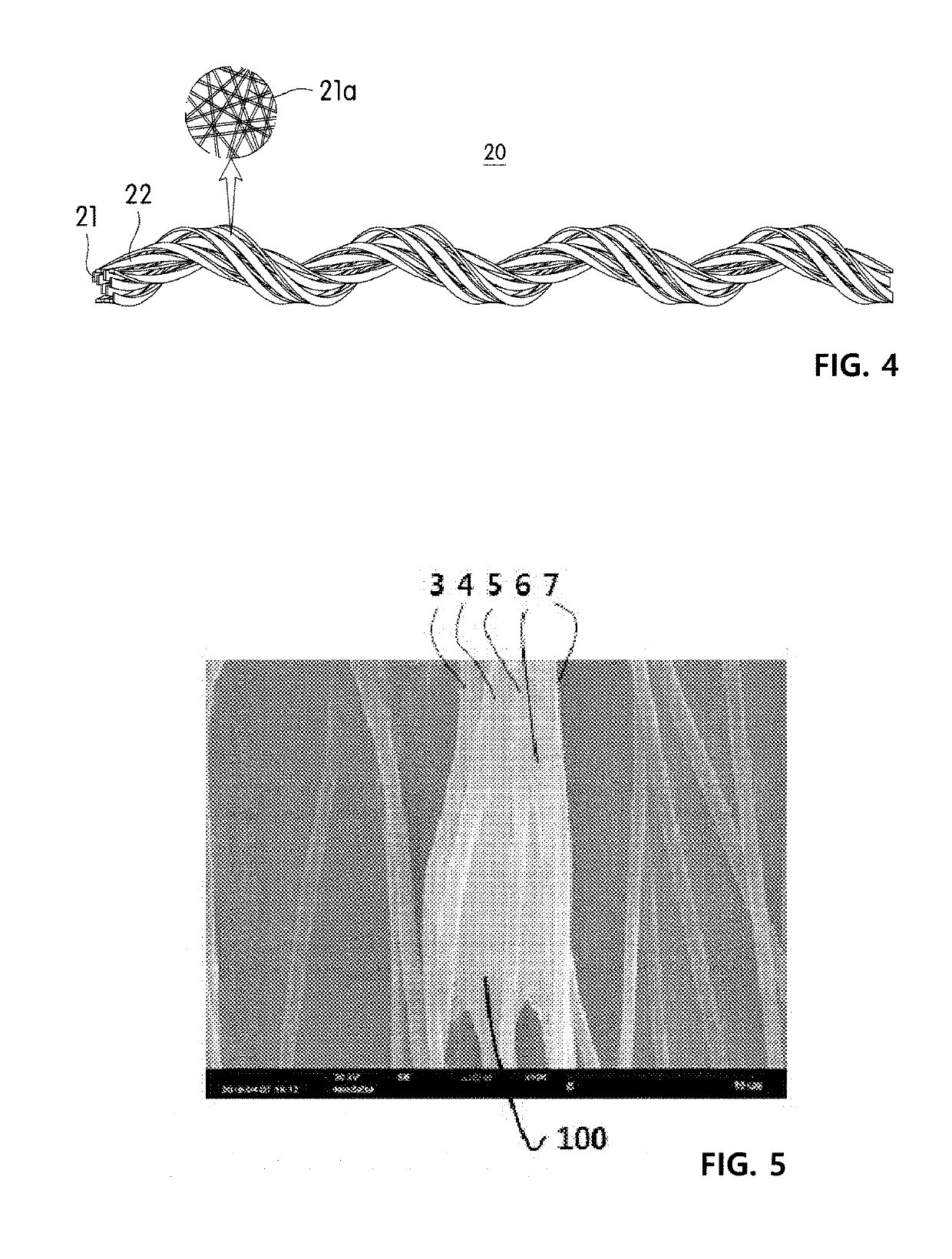Yarn for cell culture scaffold, and fabric including the same for cell culture scaffold
a cell culture and scaffold technology, applied in the direction of embryonic cells, skeletal/connective tissue cells, prostheses, etc., can solve the problems of inability to culture cells that are two- or three-dimensionally cultured in a limited space during cell proliferation to a desired level, and achieve the effects of improving the proliferation rate and cell viability, increasing the proliferation and differentiation of cells cultured, and steadily maintaining cell proliferation
- Summary
- Abstract
- Description
- Claims
- Application Information
AI Technical Summary
Benefits of technology
Problems solved by technology
Method used
Image
Examples
example 1
[0074]A spinning solution was prepared by dissolving PVDF as a fiber-forming component in DMAc / Acetone as a mixed solvent to have a concentration of 15 wt %. Electrospinning was performed using the prepared spinning solution and an electrospinning device under conditions of an applied voltage of 25 kV, a distance between a current collector and a spinning nozzle of 25 cm and a discharge amount of 0.05 ml / hole in an R.H. 65% environment at 30° C., thereby obtaining a roll of a nanofiber web having a width of 1.5 m, a basis weight of 5 g / m2 and a length of 500 m. FIG. 7A is an image of a wound nanofiber web, and FIG. 7B is a scanning electron microscope image of the nanofiber web. As shown in FIG. 7B, an average diameter of a nanofiber forming the nanofiber web was approximately 230 nm.
[0075]The roll of the prepared nanofiber web was first-slit to have a width of 5 mm as shown in FIG. 8A, and second-slit to have a width of 1.5 mm as shown in FIG. 8B, thereby obtaining slitting yarn, a...
experimental example
[0078]A plurality of strands of each of the yarns for a cell scaffold produced in Example 1 and Comparative Examples 1 and 2 were arranged parallel and fixed on a well plate for cell culture. Mesenchymal stem cells (MSCs) were loaded in the amount of 5×104, 2.75×105 or 2×104 into the well plate including the yarn for a cell scaffold, and then proliferated in a DMEM+FBS or KBS-3 basal medium at 37° C. for 4 days.
[0079]Afterward, the cultured MSCs were stained with an AP or neutral red solution, incubated in an incubator for approximately 10 minutes, and then observed using an inverted microscope or incubated in an incubator for approximately 5 minutes after being treated with trypsin-EDTA, followed by calculation of a cell count using a blood counting chamber. For another method, cells were stained using a cell counting kit (CCK-8), and absorbance was measured using a UV-vis spectrometer. Here, a control was cells that were two-dimensionally cultured in a cell culture dish under the ...
experimental example 2
[0083]A plurality of strands of the yarn for a cell culture scaffold produced in Example 1 were arranged parallel and fixed on a well plate for cell culture. Fibroblasts (HS27) were loaded into the well plate including the yarn, and proliferated in a 10% complete medium at 37° C. for 2 days. Here, the 10% complete medium was prepared by mixing Ham's F12 medium with Dulbecco's Modified Eagle Medium (DMEM) at a volume ratio of 1:1.5, and adding 7 vol % of fetal bovine serum, 65 U / mL of penicillin and 65 μg / mL of streptomycin. Afterward, an SEM image of the proliferated fibroblasts was taken and is shown in FIG. 5, and a confocal microscope image of the fibroblasts taken after DAPI staining is shown in FIG. 6.
[0084]Referring to FIGS. 5 and 6, it can be confirmed that the fibroblasts are cultured in contact with an open space between the plurality of twisted fiber strands by partial untwisting, and it can be expected that, when fibroblasts are adhered onto different spaces shown in FIG....
PUM
| Property | Measurement | Unit |
|---|---|---|
| Linear density | aaaaa | aaaaa |
| Linear density | aaaaa | aaaaa |
| Weight | aaaaa | aaaaa |
Abstract
Description
Claims
Application Information
 Login to View More
Login to View More - R&D
- Intellectual Property
- Life Sciences
- Materials
- Tech Scout
- Unparalleled Data Quality
- Higher Quality Content
- 60% Fewer Hallucinations
Browse by: Latest US Patents, China's latest patents, Technical Efficacy Thesaurus, Application Domain, Technology Topic, Popular Technical Reports.
© 2025 PatSnap. All rights reserved.Legal|Privacy policy|Modern Slavery Act Transparency Statement|Sitemap|About US| Contact US: help@patsnap.com



